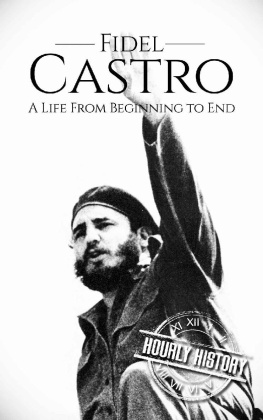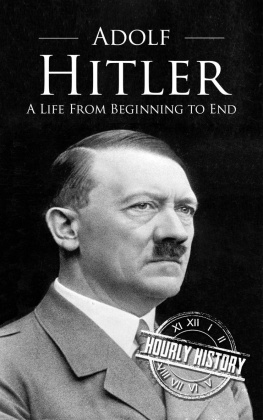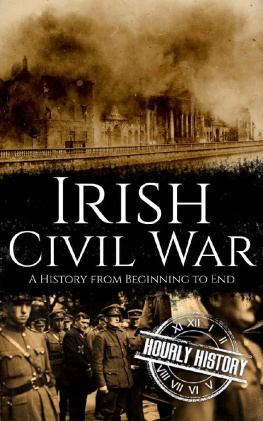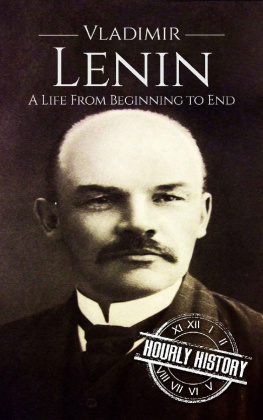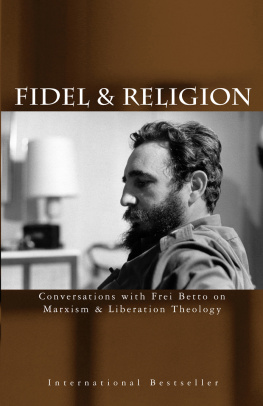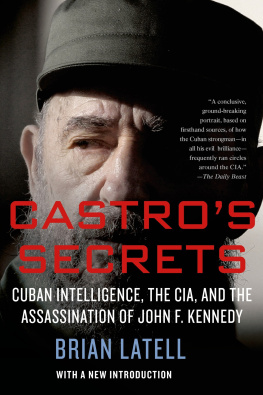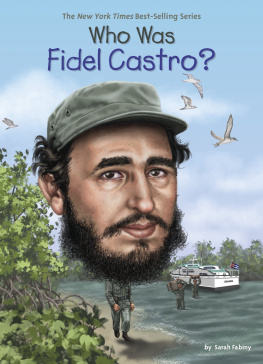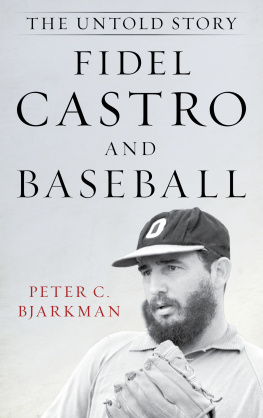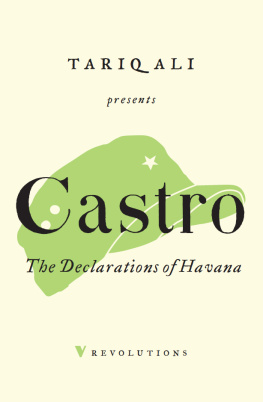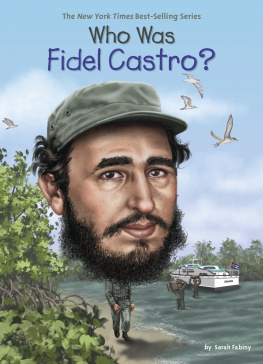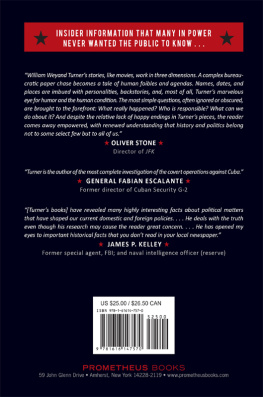FIDEL CASTRO
A Life From Beginning to End
Series Information: Revolutionaries Book 3
Copyright 2017 by Hourly History.
All rights reserved.
Table of Contents
Introduction
Fidel Castro was born on August 13, 1926, the illegitimate son of a wealthy Spanish farmer by the name Angel Castro y Argiz. His father had gained his wealth from growing sugar cane. Castros mother, a Spanish immigrant to Cuba, was named Lina Ruz and worked as a maid for Castros father when the two first came in contact with each other.
Fidels father was already married, but his marriage had long since deteriorated when he took Ms. Ruz as his mistress. Castros parents would eventually marry, but it never quite allowed him to escape the stigma of being born an illegitimate child, a fact that would haunt him the rest of his life. Illegitimate or not, by the age of eight Fidel was officially baptized a Catholic and sent to attend La Salle boarding school on his wealthy fathers dime.
The troubled young Fidel soon managed to rub the boarding school authorities the wrong way, and after a few go-rounds with students and teachers alike, he was eventually transferred to a privately-run Jesuit school in Santiago, Cuba. The stress of switching schools seemed to have a visceral kind of effect on Fidel, and seeming to succumb to his anxiety, Fidel had a bad bout of appendicitis and had to be rushed to the nearby Colonia Espanola Hospital.
The young Castro would continue to be perceived by his peers and teachers as a bit unsettled in the following years, and he didnt seem to quiet down until he enrolled into law school at the University of Havana. At the time of his enrollment Castro claimed that he was politically illiterate, but despite this claim, he soon became a leader in student activism on campus.
The two main issues that Castro was the most active about were his feelings of anti-imperialism and anti-American sentiment when it came to U.S. intervention into the Caribbean. This student activism would reach a climax in November 1946 when Fidel would give a speech in which he railed against the then Cuban President Ramon Grau.
In this speech, Fidel didnt hold back and tossing to the side any fear for his safety he tore right into the Cuban leader for his perceived flaws in governance. He received widespread media attention for his efforts and even appeared in several newspapers. This fame propelled him to join the Partido Ortodoxo or Party of the Cuban People in 1947.
Shortly after his entrance into Partido Ortodoxo Castro received word of the groups mission to overthrow the U.S. aligned president of the Dominican Republic, Rafael Trujillo. This expedition consisted of a band of over one thousand Cuban and Dominican revolutionaries who left the shores of Cuba in July 1947.
This departure did not go unnoticed, however, and it was the man who Castro had railed against just a year prior, President Ramon Grau, that would put an end to Fidels first attempt at revolution. Apparently, when word had reached the Pentagon that such an expedition was under way, the United States had pressured the Cuban president to put a stop to it.
But even though Fidels excursion with militant uprisings had been aborted, in the midst of its organization he had found his true calling. And while his first date with revolution had been stifled, Fidel Castros date with destiny had been made.
Chapter One
The Beginnings of a Revolutionary
The revolution is a dictatorship of the exploited against the exploiters.
Fidel Castro
Not long after his failed trip to the Dominican Republic, Fidel Castro arrived in Bogota, Colombia in April 1948 to support local activists. He was with a group of fellow Cuban students who were all sponsored by the Argentinean President Juan Peron. He was there with modest aims in mind, simply to organize a new chapter of the Latin American Students Congress.
But soon after his arrival, the Columbian populist Jorge Eliecer Gaitan Ayala was assassinated, leading to massive riots in the streets between the military and Jorges left-leaning supporters. Castro had met Jorge just a few days prior to his demise, and filled with passion for the fallen leader, was quick to join forces with these leftist fighters, proving himself invaluable to the cause by stealing several guns from a police station and using them to arm several of the rebels.
Fidel later recalled the rapid pace of events, claiming that the rebellion against the Colombian military regime began less than ten minutes before the news started spreading of what had happened to Gaitan. It would seem that long before the internet was even imagined, the April 1948 assassination of Gaitan almost immediately went viral and galvanized all of the left-leaning youth in Columbia to take on the right-wing militarists.
As a result, by the end of the day, over 3,000 people had lost their lives in the ensuing struggle. But Castro was not one of them. Claiming another of his nine lives, Fidel would live to see another day and return to Cuba a hero among the local revolutionary circles where he began to catch the attention of many other agitators for the cause. But it was a young law student named Mirta Diaz Balart who managed to hold the energetic young revolutionarys own gaze.
The two soon engaged in a whirlwind love affair that turned into marriage on October 12, 1948. Wed in a Roman Catholic Church in Mirtas hometown of Banes, the two then went off on what was to be a three-month honeymoon in the United States. The first leg of this tour was in Miami, but seemingly unprepared for the expenses of Floridas tourist capital, Fidel soon found himself broke, having to pawn his watch in order to finance their stay.
Fidels rich father soon intervened, however, and promptly wired him several thousand dollars so that Fidel and his new bride could resume their adventure. They then rounded off their trip by going to New York to stay with Mirtas brother Raphael who lived with his wife in a modest apartment on West 82nd Street. Here the two tried their best to take in the New York City life, with Fidel even renting a flashy white convertible to drive his new bride to see all the sights and sounds of the American East Coast.
Once the young married couple had had their fill, they returned to Havana where Mirta would give birth to Fidels firstborn son Fidelito about a year later, in September 1949. Meanwhile, as his family grew, Fidel continued to pursue his political activism while finishing his law degree. He would graduate from Havana Law School in September 1950. Shortly after his graduation, Fidel would attempt to take his practice to the streets by founding a legal partnership that sought to reach out to the poverty-stricken.
But such noble endeavors usually left Fidel without a pay check, and as a result, many of his possessions were repossessed and his utility bills were often shut off, much to the chagrin of his beloved Mirta. Despite these initial hardships, by 1952 Fidel thought that his political wrangling might have finally paid off. That was the year that Fidel managed to place himself as a prime contender in a 1952 run for Cubas House of Representatives.
It was during this campaign that Fidel would meet his future enemy, and the man he would rage a revolutionary war against; General Fulgencio Batista. General Batista had already been president of Cuba from 1940 to 1944, and in 1952 he had thrown his hand in for another presidential bid. However, when it became clear that he would be facing certain defeat, Batista turned away from the ballot box and to the guns of his soldiers, seizing power via a military coup and effectively canceling the 1952 elections.

